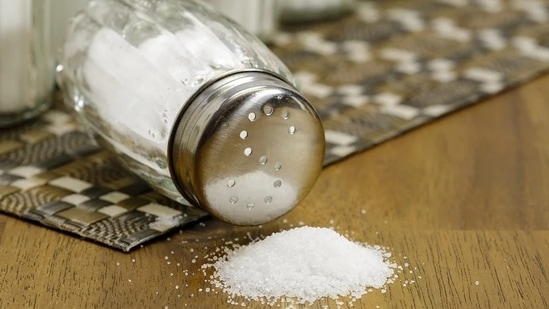Dietary sodium reduction is a global priority
This article is authored by Eram Rao, professor, Department of Food Technology, Bhaskaracharya College o Applied Sciences, University of Delhi.
It is particularly hard to imagine life without salt. When world history is viewed through a salt lens, we find that animals traced the paths to salt reserves, and human beings followed. These salt trails grew into well-established human settlements. When our diet shifted from naturally salt-rich foods to cereals, we needed salt to improve its palatability. The word salad originated from the word salt when the early Romans began salting their leafy greens and vegetables. Undeniably, the history of salt is both broad and unique and as civilization grew, salt became an important commodity for trade because of its antimicrobial role in food preservation. We now well understand that salt is a basic taste and is critical for physiological functions like maintaining the body’s electrolyte balance.

Sodium levels in our body require a delicate balance. While low salt intake results in cerebral wastage, excessive salt intake is associated with hypertension, which is called a silent killer. Our body shows no early warning signs and is the leading risk factor for cardiovascular diseases, like heart attack and stroke. Dietary sodium reduction practices could save an estimated seven million lives globally by 2030. The World Health Organization has set a target to reduce global sodium intake by 30% by 2025. It recommends less than 5g (1 tsp) of salt daily for adults and sodium intake not beyond 2g each day. A typical Indian daily diet contains 9-12g of salt (which is double). Most of the salt comes from hidden sources such as preserved and processed foods. Globally, there is an urgent need to seek social behavioural changes amongst consumers and explore alternatives to reduce their salt intake.
The role of salt as a flavour enhancer cannot be overlooked. It is an indispensable additive that brings out the essence of aromatic compounds, which play a significant role in food acceptability. Planning dietary sodium reduction and improved nutrition for the Amrit Peedhi cannot neglect the role of taste in our diets. Here are some ways to lower dietary sodium:
- Salt substitutes: Traditionally, several mineral salts have been popularly used in our cuisines. Rock salt, Himalayan pink salt, sendha namak, etc. to name a few. While these salts are rich in minerals, their sodium content is equivalent to table salt and their salty perception is less. Other salts like KCl, MgCl, and CaCl are emerging as popular salt substitutes. However, these salts of potassium, magnesium, and calcium are more likely to reduce the palatability of food because of a metallic or bitter aftertaste. Overconsumption of KCl may also lead to hyperkalemia. Overall, salt substitutes may not necessarily help in managing hypertension.
- Altering shape and structure of salt: We perceive a salty taste depending on the dissolution and diffusion rates of salt in our mouths. This rate can be sped up if the particle size of salt is decreased, and its surface area is increased, which will result in a higher transmission of sodium ions to our taste buds and an intensified salty taste perception. Nano salt, sea salt, sheet salt, and hollow salt microspheres can heighten salty taste without altering the sensory experience of food. Hollow salt microspheres reduce actual sodium content through their internal hollow structure while maintaining consistent salty taste perception. However, while this is emerging as a viable strategy for sodium reduction, it is an expensive process and eventually leads to a rapid decline in our perception of salty taste.
- Multisensory synergistic effect: A promising dietary sodium reduction method is enhancing salty taste perception using multiple senses like gustatory, olfactory, trigeminal, and visual. This approach not only accentuates our culinary experience and nutrition but also offers novel insights and theoretical support for producing high-quality, low-sodium foods. Two or more taste substances interacting in the mouth can enhance taste and open new taste perceptions. For example, specific concentrations of umami and sour substances augment salty taste perception because of activated taste buds and increased salivation. This is because such food dissolution leads to sodium ion dissociation, enhancing its contact with membrane ion channels.
Historically, culinary experts have relied on a spice mix to elevate flavour while keeping salt levels in check. Condiments and herbs such as jeera, curry leaves, hing and mustard seeds, have stood the test of time by adding rich flavours to Indian cuisine. Cooking techniques like slow-roasting and fermentation also enhance the perception of salty taste. Similarly, tomatoes, cheese, hydrolysed vegetable proteins, fermented sauces, etc., all contain umami flavour which is derived from a naturally occurring amino acid glutamate. Monosodium glutamate contains 70% less sodium than table salt and is used as a natural flavour enhancer, particularly in Oriental cuisines, and is gaining popularity in Indian cooking too. The umami flavour interaction with salt heightens our perception of salty taste while keeping the salt content checked in our diet. In 2022, Singapore launched a first-ever national-level strategy to reduce sodium intake by promoting lower-sodium salt alternatives (where some sodium chloride, or table salt, is replaced by minerals or umami-eliciting glutamate enhancers) and seasonings.
Table salt is an indispensable component of food, and controlling its intake is crucial for public health. Our goal is to create healthier and flavorful low-sodium food choices that satisfy consumer preferences and wellness needs. Reformulation of processed foods and consumer behavioural change through education and mass media campaigns will help us solve this global problem.
This article is authored by Eram Rao, professor, Department of Food Technology, Bhaskaracharya College o Applied Sciences, University of Delhi.





